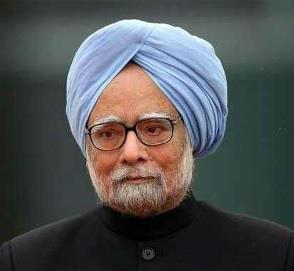October 11, 2015
Brief Scorecard: South Africa 303 for 5 (de Villiers 104*, du Plessis 62) beat India 298 for 7 (Rohit 150, Rahane 60, Rabada 2-58, Tahir 2-57) by five runs

The South African players celebrate their tight win, India v South Africa, 1st ODI, Kanpur, October 11, 2015
October 11, 2015
Brief Scorecard: South Africa 303 for 5 (de Villiers 104*, du Plessis 62) beat India 298 for 7 (Rohit 150, Rahane 60, Rabada 2-58, Tahir 2-57) by five runs

The South African players celebrate their tight win, India v South Africa, 1st ODI, Kanpur, October 11, 2015
KANPUR – There were two centurions, each magnificent in its own right. There was the highest total in One-Day Internationals at the Green Park Stadium in Kanpur. And there was the special moment when the home crowd chanted the opposition captain’s name. The first ODI of the five-match series got off to a terrific start on Sunday (October 11), an absolute nail-bitter in which South Africa came out on top with a five-run win.
A lot of that was down to AB de Villiers. He opted to bat after winning the toss, and after Faf du Plessis had laid the foundation with a 77-ball 62, set the place alight. So enamored were the Kanpur faithful with de Villiers that the South African captain found plenty of favor – “AB-AB” they chanted, as he pillaged his way to a 73-ball 104, a typical blitzkrieg of a knock that contained six sixes and five fours.
De Villiers’s efforts – aided by R Ashwin’s withdrawal through a side strain after bowling 4.4 overs – had taken South Africa to 303 for 5, the highest ever total at the venue, and Mahendra Singh Dhoni’s men faced a daunting chase. Dhoni, in fact, had sprung something of a surprise by naming Ajinkya Rahane in the XI, when on the eve of the match, he had insisted it would be difficult to fit in the Mumbai batsman.
It was, therefore, a test for Rahane, and though he didn’t fare too badly, scoring a 82-ball 60, it is Rohit Sharma on whom the spotlight must linger – he took the lead as the two put on 149 for the second wicket, and went on to score a stunning 133-ball 150, an innings where he was rarely troubled. One of sticks used to beat Rohit within the past has been his tendency to take his time to get going. There was none of that on this day. For most part of his knock, he had a positive strike-rate, and he formed the bedrock of the chase.

Rohit Sharma raises his bat after completing his eighth ODI century, India v South Africa, 1st ODI, Kanpur, October 11, 2015
As long as Rohit was in the middle, India looked good to complete the chase. But Imran Tahir changed all that in the 47th over. At the time, India needed 35 off 24 balls, but Tahir claimed two crucial wickets that changed the face of the chase. He first had Rohit caught and bowled, and two balls later, had Suresh Raina holing out. South Africa soon had a 1-0 lead, Kagiso Rabada giving away just five runs and taking two wickets in the final over, with India needing 11 to win and eventually settling for 298 for 7.
In the morning, South Africa made a steady start, through Quinton de Kock who played his shots early on, even as Hashim Amla opted to take his time. The two were solid and a breakthrough was nowhere in sight till Ashwin was brought on. The first wicket ensued as de Kock edged to slip, and the 45-run opening stand was ended. Dhoni, curiously, then withdrew Ashwin, presumably saving him for a later stage, for a time when South Africa are at their most dangerous, but that meant the batsmen didn’t have to deal with India’s best bowler as they looked to lay a foundation.
Amla and du Plessis made India toil. Du Plessis, in fact, found the perfect middle ground between unabashed aggression and solid sedateness, and boundaries were claimed off Amit Mishra, Stuart Binny and Raina. All the while, Amla poked and prodded away to a 59-ball 37. The second-wicket stand had yielded 59 when Mishra sent in a faster one that went through Amla’s defences and clattered the stumps.
In came de Villiers – the crowd screamed at the top of their lungs – and that was the cue for Ashwin to be reintroduced as well. There was no immediate wicket this time around though, as de Villiers played him with caution. Unfortunately for India, Ashwin was then replaced, midway through the 32nd over, as he walked off with what was later confirmed as a side strain, sustained while diving to stop a drive off his own bowling.
Meanwhile, du Plessis received a long hop from Raina, and he deposited it over midwicket to bring up his half-century in 59 balls, before falling to an Umesh Yadav delivery that moved in a tad.
With the foundation laid and big-hitters in the middle, South Africa shifted gears. De Villiers’s first boundary of the day was a statement of intent, stepping out of the crease and clearing the midwicket boundary comfortably off Raina. Later, Binny was treated similarly, a crisp pull sending the ball to the ropes.
Between boundaries, de Villiers played the ones and twos with David Miller, meaning India had the constant pressure of a ticking scoreboard. Miller didn’t last long though, stumped off Mishra, but de Villiers was on song and feasted on Binny in the 45th over. Twisting and turning in typical fashion, de Villiers claimed 21 runs off the over, with two sixes and fours. It didn’t help that a flustered Binny kept bowling short.
Bhuvneshwar Kumar then had Duminy caught behind, but that had little to no effect as de Villiers farmed the strike and claimed 18 runs off Bhuvneshwar’s next over. Farhaan Behardien contributed as well, hitting five fours and a six, before de Villiers completed his century with a six off the final ball of the innings sent down by Yadav – the over went for 19 runs – to leave India chasing the highest total at the venue.
It meant India needed a steady, if not a flying start, at the very least. They got something of that through Shikhar Dhawan and Rohit, the two adding a fairly quick 42 for the opening wicket, Dhawan in particular looking in the mood. Having reached a 28-ball 23, he was unfortunate to be dismissed when Morne Morkel struck him on the pads, replays suggesting the ball would miss legstump.
Rather surprisingly, it was Rahane who walked in at No. 3 in place of Virat Kohli, and while he settled in, Rohit carried on attacking. Kagiso Rabada erred in his lines a couple of times, and was punished, JP Duminy was charged, and his enterprise kept the run-rate decent. Rohit brought up his half-century, off just 48 balls, in the process of hitting Morkel for consecutive fours, the two picking up a boundary every now to take the boost the total past 150.
It was then time to accelerate. Out of nowhere, Rohit played a slog sweep off Duminy to awaken the crowd out of their slumber, picking it from outside off and sending it to over deep square-leg. In the next over off Imran Tahir, he played two consecutive inside-out shots for a four and a six, and at the time, India looked good to complete the chase.
There was a blip, though, as Rahane fell in soft fashion, guiding a harmless delivery straight to Miller at extra cover. In came Kohli, but all the focus was on Rohit who was on the verge of an eighth ODI century. He got to the mark in 98 balls, flicking Behardien through midwicket, and celebrated, with a rapturous crowd and an applauding Kohli, a knock in which he was rarely troubled.
With the chase entering a crucial phase, Kohli was dismissed for 11, Dale Steyn claiming the wicket after good work from Morne Morkel at short fine-leg. Dhoni walked out, but struggled to get going. It was all down to Rohit. He was cramping a bit, but even with minimal footwork, he was deadly. Tahir, Morkel and Steyn were all heaved for sixes as India set about making the asking-rate reasonable.
However, then came that Tahir over, after which Dhoni and Binny attempted to make up the deficit with quick singles and doubles. Eventually, though, they were left with too much to do.
Courtesy: Wisden India







































































































